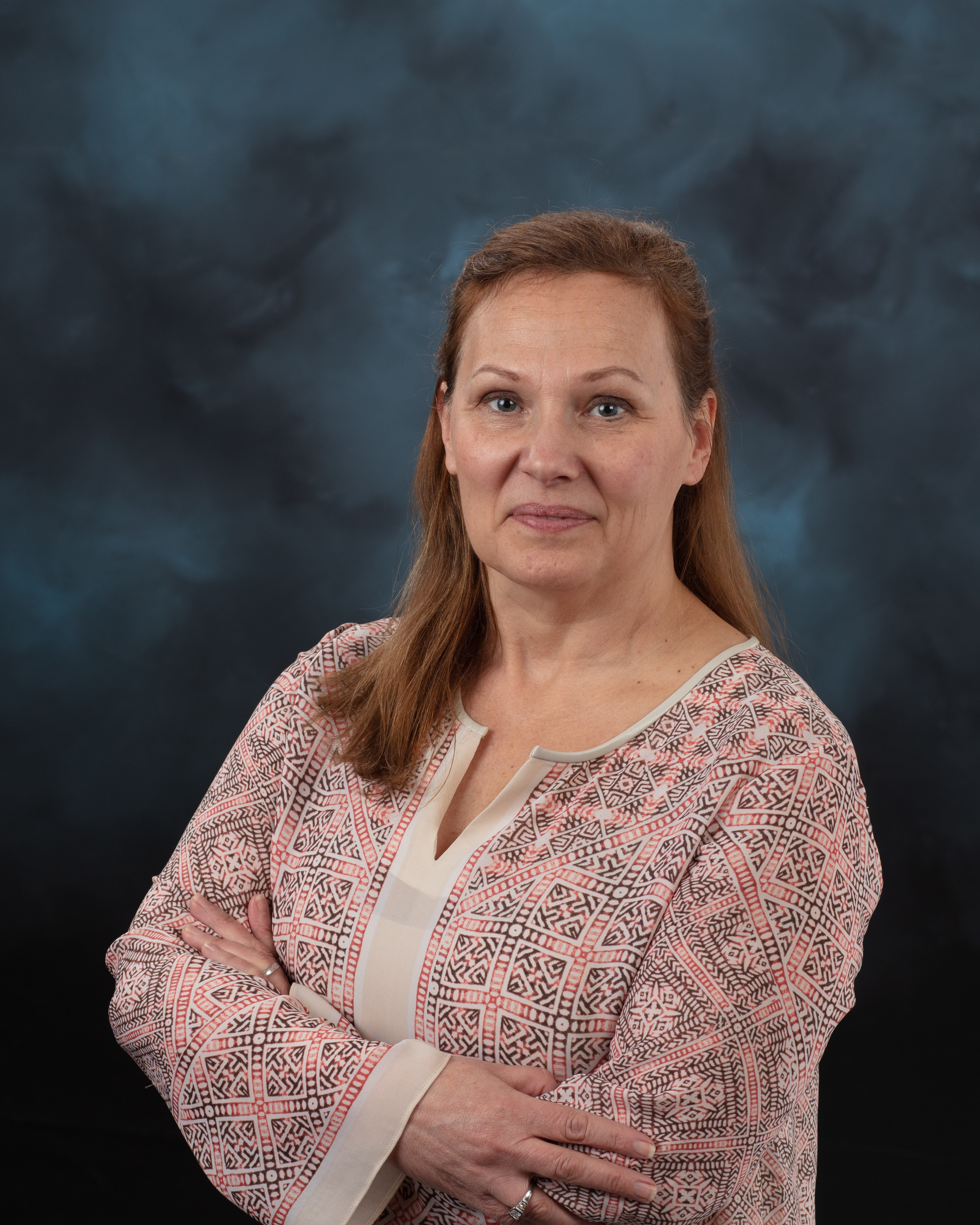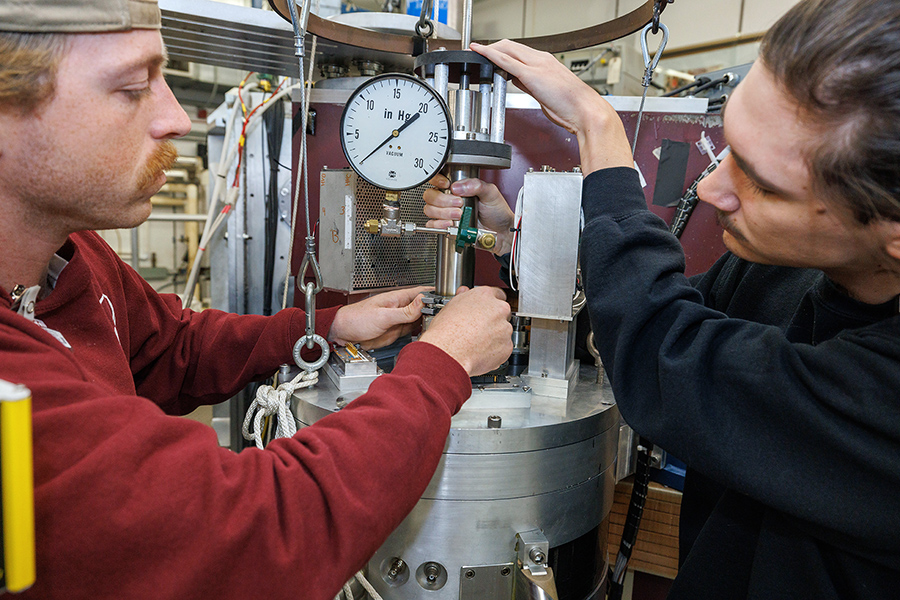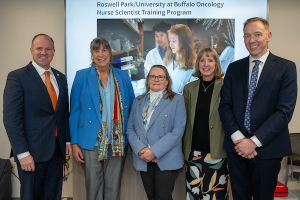For the second year, the Tennessee Valley Authority joins Innovation Crossroads as a program sponsor enabling an innovator focused on energy-related research. Innovation Crossroads is also sponsored by DOE’s Advanced Manufacturing Office.
Selected through a merit-based process, these scientists and engineers will have the opportunity to advance their technologies by working with world-class science experts and unique capabilities at ORNL, such as Summit, the nation’s most powerful supercomputer; the Manufacturing Demonstration Facility, DOE’s largest advanced manufacturing research center; and the Spallation Neutron Source, offering atomic-level insight into advanced materials. The innovators also will be partnered with a powerful network of mentoring organizations in the Southeast to help them develop business strategies to advance their breakthroughs to market.
The fourth cohort of Innovation Crossroads fellows and their projects include:
Renee Carder: Mie photo sensors and arrays
Carder’s photo sensor technology uses resonances called Mie that improve photo sensor performance by increasing light sensitivity by concentrating the amount of light available to the photo sensor based on the sensor’s optical, rather than its physical cross-section. As a result, optical absorption can be dramatically enhanced. The resonance mechanism also eliminates the need for filters and gratings. By providing more pixels per spot of light, information can be combined to sharpen contrast and reduce noise for unprecedented high-resolution images in a small package. Carder holds a doctorate in neurology, anatomy and cell science from the University of Pittsburgh.
Danielle Castley: Lightweight, high-temperature neutron shielding material
Castley is developing a high-temperature, lightweight neutron-shielding technology that will help reduce costs and increase safety in the nuclear industry. This technology operates at a temperature that is 50% higher than existing polymer-based neutron-shielding products. The higher operating temperature introduces significant opportunities for deploying neutron shielding materials in higher-temperature locations within the reactor containment and/or to improve the safety margin in applications originally designed for shielding with a lower operating temperature. Castley holds a doctorate in materials engineering at Dartmouth College.
Joe Fortenbaugh: On-demand tunable curing of thermoset composites for additive manufacturing
Fortenbaugh is designing, developing, and testing formulations of thermally cured thermosets which can directly and rapidly produce cured composite thermoset materials upon photothermal heating. This type of heating can be used to bring rapid, on-demand curing to a wide range of thermally cured thermoset polymers. The goal is to develop formulations that can be used in additive manufacturing using epoxy resins, polyimide, phenol-formaldehyde, and polyester using composite materials such as carbon fiber, ceramics, graphene, metals, and metal oxides. Fortenbaugh holds a doctorate in chemistry from Penn State University.
Thomas Foulkes and Garrett Meyer: Nanostructured coatings for direct water immersion cooling of server electronics
Foulkes and Meyer are deploying the next generation of high-performance central processing units and graphics processing units required to feed the power demand for elastic cloud computing, big data analytics, complex simulations, and artificial intelligence. The technology creates a higher computational density by transferring heat with direct, water immersion cooling across nanoengineered, durable, and scalable hierarchical porous coatings deposited holistically on electronics. Foulkes holds a doctorate in electrical engineering from the University of Illinois at Urbana-Champaign. Meyer is a graduate in mechanical engineering and computational mathematics from the Rose-Hulman Institute of Technology.
Erica Grant: Security for connected facilities and equipment
Grant is creating secure locks for doors by using quantum physics to tap into the randomness of particle behavior to create completely unpredictable and untraceable digital keys for smart locks. Smart locks use digital keys to access a lock with a smart phone, programmable keycard, or key fob, but they present new ways to break into/hack the lock. This technology eliminates the need for master keys and provides security with user-friendly and efficient software. Grant is a doctoral candidate in quantum computation at the University of Tennessee.
“We are pleased to welcome this new group of entrepreneurs to Innovation Crossroads and look forward to supporting them as they work to advance manufacturing and energy storage innovation in the U.S.,” said Stan Wullschleger, interim associate laboratory director for Energy and Environmental Sciences at ORNL.
Innovation Crossroads, which welcomed its first cohort of innovators in May 2017, is one of DOE’s Lab-Embedded Entrepreneurship Programs designed to provide unique support to science-based startups in order to help advance game-changing technology from the laboratory to the marketplace. The two-year fellowship provides a cost-of-living stipend, comprehensive business development plan assistance, and up to $200,000 to use on collaborative R&D at ORNL, the nation’s largest science and energy laboratory.
Innovation Crossroads is one of three DOE Lab-Embedded Entrepreneurship Programs. These programs, funded by the Advanced Manufacturing Office within DOE’s Office of Energy Efficiency and Renewable Energy, address critical gaps in human capital by providing fellowships and two-year institutional homes where talented innovators become first-time entrepreneurs.
“DOE’s Lab-Embedded Entrepreneurship Programs help innovators harness the capabilities of the national labs to turn their discoveries into viable products and American businesses,” said AMO Deputy Director Valri Lightner. “The fourth cohort at Innovation Crossroads will be developing a wide range of promising energy and manufacturing technologies, and we look forward to seeing their concepts advance over the next two years.”
“Innovative ideas, by their very nature, hold exciting potential to better the lives of people who live and work in the Tennessee Valley and around the world,” said Joe Hoagland, vice president, TVA Innovation & Research. “We at TVA are pleased to partner with Oak Ridge National Laboratory in support of the brilliant visionaries who are taking part in this unique entrepreneurial fellowship program.”
Applications for cohort five of Innovation Crossroads will open in fall 2020. DOE’s Office of Energy Efficiency and Renewable Energy accelerates research and development of energy efficiency and renewable energy technologies and market-based solutions that strengthen U.S. energy security, environmental quality, and economic vitality.
EERE’s Advanced Manufacturing Office supports early-stage research to advance innovation in U.S. manufacturing and promote American economic growth and energy security.
The Tennessee Valley Authority is a corporate agency of the United States that provides electricity for business customers and local power companies serving nearly 10 million people in parts of seven southeastern states. TVA receives no taxpayer funding, deriving virtually all of its revenues from sales of electricity. In addition to operating and investing its revenues in its electric system, TVA provides flood control, navigation and land management for the Tennessee River system, and assists local power companies and state and local governments with economic development and job creation.
UT-Battelle manages ORNL for the DOE’s Office of Science. The DOE Office of Science is the single largest supporter of basic research in the physical sciences in the United States and is working to address some of the most pressing challenges of our time. For more information, visit energy.gov/science.
Original post https://alertarticles.info




